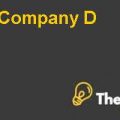Problem Statement
Commerce’s indulgence in ‘Retailtainment’ is critically being analyzed in terms of its impact on the brand image of the commercial bank, which needs to create differentiation in an industry where commodity products are being offered while at the same time it cannot deviate too much from the banking industry’s norms.
External Analysis
The external environment of Commerce would be analyzed using Porter’s Five Forces industry model as shown in Appendix 3. The commercial banking industry in the US would be studied under this model in order to understand the competitive rivalry being faced by Commerce.
Porter’s Five Forces Analysis
Bargaining Power of Supplier: A typical commercial bank being the supplier in this model has a low bargaining power in the industry where it is just another ‘me-too’ bank offering commodity products such as deposits and loans. Differentiation can be created through provision of services and commercial banks can gain prominence by indulging in extra services for attaining a competitive edge in the commercial banking industry.
Bargaining Power of Buyer: The buyer has a high bargaining power in the commercial banking industry since he has low switching costs along with several choices in the form of commercial banks offering commodity products. While there is a rising trend of cross-selling in the commercial banking industry, which may be increasing the dependency of buyers on a particular bank, the fact that customers can easily switch banks by taking their deposits into other banks indicates that the buyer has a higher bargaining power as compared to the supplier.
Degree of Rivalry: The commercial banking industry being involved in the sale of commodity products offers a high degree of rivalry. Competition exists not only from local banks which are currently offering services nationally but also from international banks which have established their branches in the US. For instance, the US commercial banking industry has players like the Bank of America and Washington Mutual while at the same time there are international players like the Dutch Bank, ING.
Threat of Substitutes: The threat of substitutes is high in the commercial banking industry if one looks at the different categories of commercial banks which are currently offering commodity products to customers. For instance there are players like Commerce with a focus on ‘retailtainment’ and extra service features to keep customers entertained and satisfied while at the same time there are large banks offering the same types of products with a focus on high deposit rates. These larger banks may have been formed through mergers or acquisitions and have a low emphasis on service differentiation or retailtainment.
Threat of New Entrants: The threat of entry of new players is high in the industry since banks can set up operations from scratch especially as it is easier to start a bank in the industry than to improve an existing one. While credibility plays an important role in deterring entry of new players which have not built a trustworthy reputation, it should be noted that when taking a loan from a bank, a customer does not even need the bank to offer credibility. This is because the buyer becomes the bank’s debtor and it is the bank that demands credibility and so buyers would welcome the entry of new players offering opportunities for borrowing.
The commercial banking sector does not even require analytical skills in personnel since individuals are hired on the basis of their ability to perform repetitive tasks and offer customer interaction skills. In addition to this, the willingness of personnel to accept relatively low wages is considered an incentive for hiring workers. This indicates that the threat of entry for new players in the commercial banking industry is low since a new bank does not have to train workers or pay high wages or salaries for starting up operations.
Internal Analysis
SWOT Analysis
Appendix 1 shows the SWOT analysis for Commerce highlighting its strengths, weaknesses, opportunities and threats.
Strengths: Commerce’s customer-orientated approach in terms of offering a friendly environment at the bank with the help of greeters in addition to the availability of coffee and newspapers for waiting customers shows how the atmosphere is made attractive to capture customers who are dissatisfied by large commercial banks. Additional privileges in the form of a drive-through window for busy locations at night offers added convenience to customers. Commerce’s strategy of offering gifts to customers who open accounts at the brand is its way of encouraging more deposits. However, the bank’s strengths are in the form of a rapid growth of deposits where the bank is experiencing a growth more than that of industry average. With the highest deposit rate in the country, Commerce is a strong player in the commercial banking industry and has more traffic in banks than major fast food chains like McDonald’s. The fact that the bank’s income doubled from 1998 to 2001 as compared to a growth of only 20% in the commercial banking industry suggests that Commerce is performing well as per industry statistics. Enjoying a credible reputation in the industry, Commerce enjoys substantial returns leading to a low break-even time for new branches.
Weaknesses: While Commerce has strengths that give it a competitive edge in the industry, the current business model is not free from weaknesses. The fact that Commerce pays the lowest rate on every market with deposit rates half a percentage lower than those of......................
This is just a sample partial case solution. Please place the order on the website to order your own originally done case solution.
Commerce Bank has become one of the fastest growing banks in the country, despite the fact defied conventional about how to grow deposits. Banks historically risen or compete in deposit rates, or through acquisitions that expand its deposit base. Commerce has the lowest rate for deposits in each of the local markets it serves, and acquired no other banks, but its growth rate is unmatched. Her secret? Commerce differentiates itself in the service. Explores the very refined service model, which is developing its operations and service functions, and considers that the compromises in the competitive service.
Taught in the second module of the course to regulate operation of the service, which is considered a model of sustainable design services (606-031). "Hide by Francis H. Frey, Corey Hajim Source: HBS Premier Case Collection 22 pages. Publication Date: December 2, 2002. Prod. #: 603080-PDF-ENG













